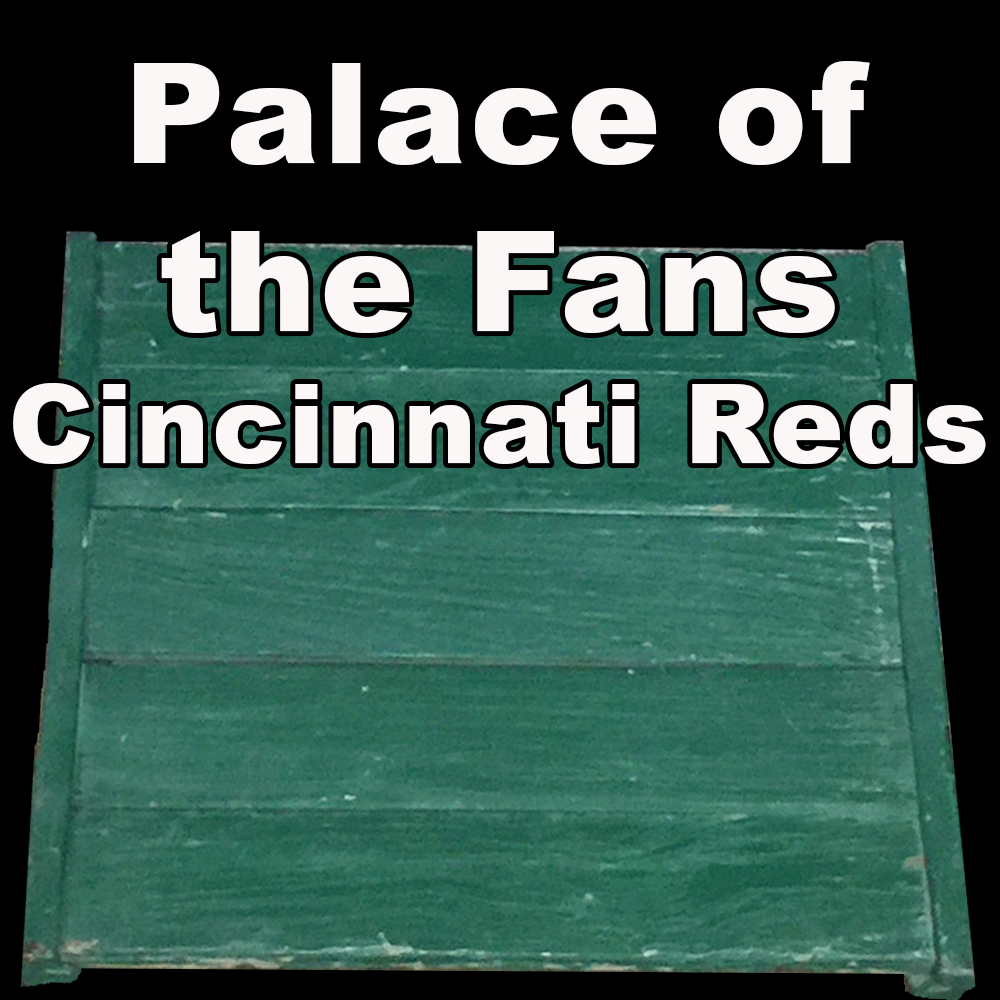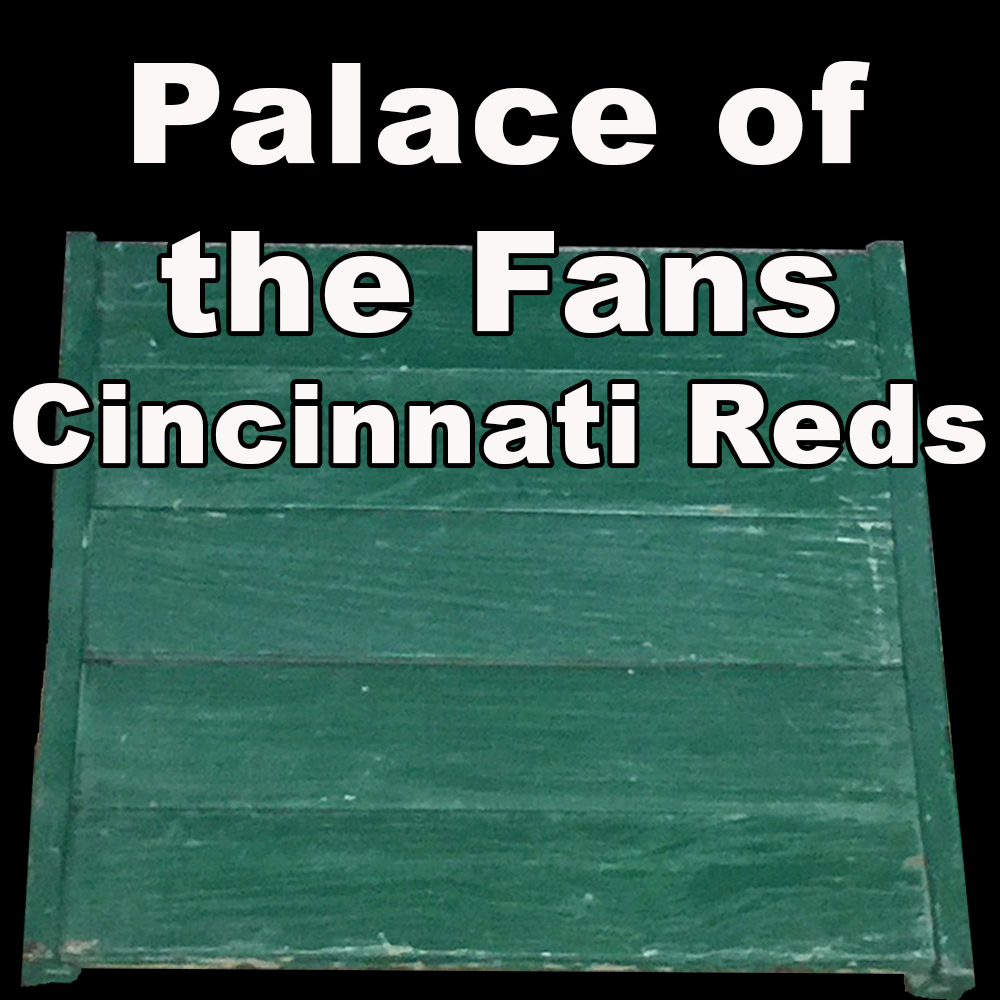Palace of the Fans (Cincinnati Reds)
Palace of the Fans (Cincinnati Reds)
5.0 / 5.0
(1) 1 total reviews
Prodcut Base price with no add-on options
15 in stock
Product Price with any add-on options selected
Couldn't load pickup availability
Wooden basketball court flooring pen blanks!
Pen Blanks are a close 5/8" x 5/8"
Ring blanks are 1-1/2" x 1-1/2"
All blanks will come with one COA per blank. COAs are 4" x 6" card stock with silver foil embossed COA seal.
All blanks are cut as they are ordered.
_____________________________________________________________________________________________
Palace of the Fans was a Major League baseball park located in Cincinnati, Ohio. It was the home of the Cincinnati Reds from 1902 through 1911. The ballpark was on an asymmetrical block bounded by Findlay Street (south), Western Avenue (northeast, angling), York Street (north) and McLean Avenue (west).
The "Findlay and Western" intersection was the home field of the Reds from 1884 through June 24, 1970, when the team moved to Riverfront Stadium. The location of the diamond and consequently the main grandstand seating area was shifted several times during the 86½ seasons that the Reds played there. The Palace of the Fans was actually the second of three parks that stood on the site:
1884–1901: League Park
1902–1911: Palace of the Fans
1912–1970: Redland Field, renamed Crosley Field in 1934
In 1900, the southwest grandstand of League Park, the home of the Reds since their days in the American Association, burned to the ground. The Reds were forced to spend most of May and June on the road while League Park was reconfigured to move the grandstand to its old location in the southeast corner. However, Reds owner John Brush decided to build a new grandstand for the 1901 season.
The Palace of the Fans, so audaciously named, also presented a striking appearance. Designed in a neo-classic style reminiscent of Chicago's World's Columbian Exposition of 1893, the Palace featured an extravagant facade, with 22 hand-carved Corinthian columns with elaborate details at the top, and opera-style private boxes in front of the covered grandstand. The grandstand actually sat atop carriage stalls so that the wealthy could simply drive directly to the game, an early precursor of "luxury suites". It was built mostly of concrete, and was the second park (after Baker Bowl in Philadelphia) to use concrete for the bulk of its construction.
The grandstand was unique: a blend of Roman and Greek styling that had never been used before in a grandstand, and has never been seen since. The 3,000-seat grandstand featured 19 "fashion boxes" along the front railing that could hold 15 or more well-to-do fans. Beneath the grandstand, at field level, was standing room for 640 more spectators in a rowdy section known as "Rooter's Row." This section was so close to the players, the fans could take part in on-field conversations. Rooters Row was also strategically placed by the bar. The facade behind home plate contained the word "CINCINNATI". This was obviously of no benefit to anyone in attendance, assuming they knew where they were, but it ensured that pictures of the stands would inform viewers. However, the designers of the park forgot to include dugouts or clubhouses for the players.
The original 1884 stand remained as right field seating, having escaped the fire. A less elaborate stand connected the old and the new structures. Both the contemporary club owners and modern baseball historians consider the 1902 structure to be a new ballpark. Cincinnati fans not interested in the hype continued to call the facility "League Park", hence the alternate historical name, "League Park III".
On Opening Day, April 17, 1902, some 10,000 spectators crowded into the park and watched the Reds lose to the Chicago Colts (a.k.a. "Cubs"), 6-1.
The Reds had little on-field success during their stay at the Palace, but one event foreshadowed an historic development on this site: night baseball. On June 19, 1909, an exhibition game was held at the Palace under temporary lighting developed by George F. Cahill. This was not the first time night baseball had been attempted, but this experiment was deemed a success. In addition a soccer game between a Cincinnati team and a British touring team and a football game between the Gyms and Christ Church were held on October 14, 1909. Nothing would come of it, though, until the 1930s when night ball came to be seen as a necessity for boosting attendance.
Meanwhile, as with the original Columbian Exposition buildings, the Palace soon lost its luster. For one thing, the seating area was too small. Then, over time, the structure fell into a state of disrepair; city inspectors began to note cracked girders, decayed supports and unsafe floors. Finally, another fire damaged the stands significantly. The Palace was done after 10 seasons.
When it opened, the Palace had been described as "the handsomest grounds in the country". As the Palace prepared for its final game in 1911, the not-yet-built Redland Field was predicted to be "a modern and sumptuous stand, the equal of anything in the country."
The last game played at the Palace was on October 12, 1911, against the Cubs, the same team they played when the park was opened. By opening day of 1912, the Reds had an entirely new arena waiting for them on the site: Redland Field, which would later become known as Crosley Field.
Share

The pen blanks we received were in excellent condition. The remnants of the historical stadium spark the desire to learn more about the Reds stadium history. I will be making a custom pen from -a blank for the Executive Director of the Cincinnati Reds Hall of Fame and Museum.


